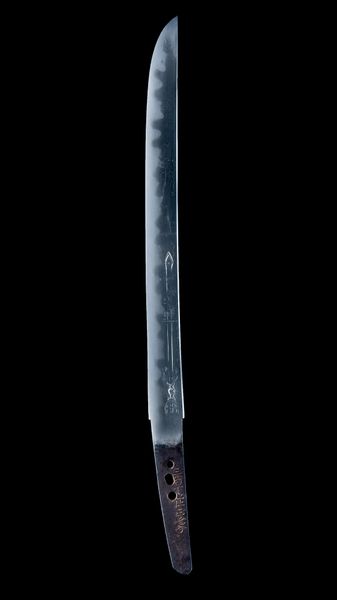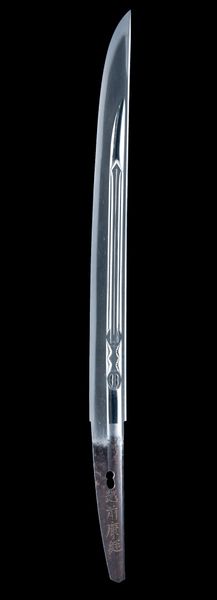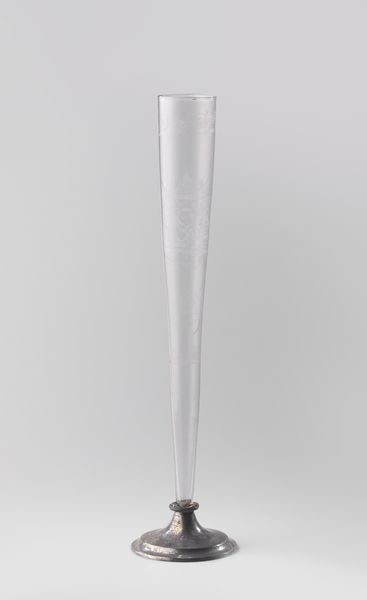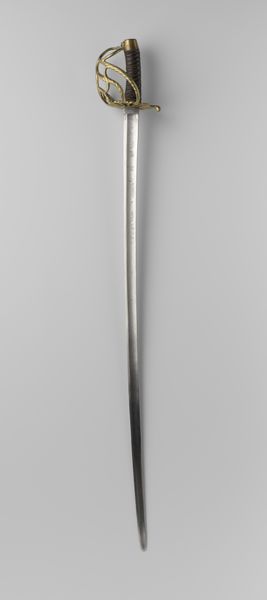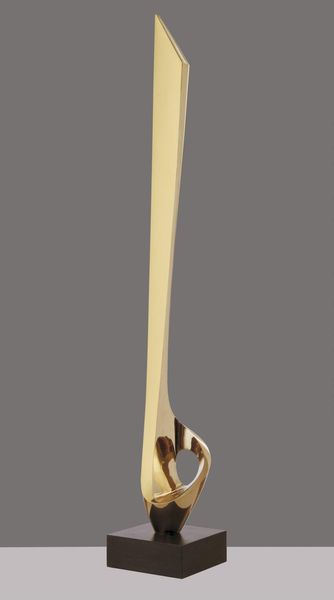![Blade for a Sword (<i>Katana</i>) by Gassan Mitsu[...]](/_next/image?url=https%3A%2F%2Fd2w8kbdekdi1gv.cloudfront.net%2FeyJidWNrZXQiOiAiYXJ0ZXJhLWltYWdlcy1idWNrZXQiLCAia2V5IjogImFydHdvcmtzLzQ1NDVjZDdmLTFkZjMtNGJiMC05MjkxLWQ5M2I4ZmZhNGZjOS80NTQ1Y2Q3Zi0xZGYzLTRiYjAtOTI5MS1kOTNiOGZmYTRmYzlfZnVsbC5qcGciLCAiZWRpdHMiOiB7InJlc2l6ZSI6IHsid2lkdGgiOiAxOTIwLCAiaGVpZ2h0IjogMTkyMCwgImZpdCI6ICJpbnNpZGUifX19&w=3840&q=75)
metal
#
medieval
#
metal
#
asian-art
#
japan
#
form
#
line
#
sword
Dimensions: L. 35 3/4 in. (90.8 cm); W. 1 1/2 in. (3.8 cm); Wt. 1 lb. 11 oz. (765.4 g)
Copyright: Public Domain
This blade for a sword, or katana, was made by Gassan Mitsu[...], sometime between 1450 and 1550. Immediately, the form arrests our attention, its sleek curvature like a frozen wave, a testament to the maker's skill. The blade is constructed of what appears to be a layered material that suggests not only durability but a complex process of forging. The lines, refined and powerful, communicate a dual sense of elegance and lethal intent. Its metallic sheen hints at both the functional and the symbolic dimensions of the object, reflecting light to suggest its potential for action. The katana is more than just a weapon; it embodies complex cultural codes and philosophical concepts. Consider the tension between its aesthetic appeal and its martial function. This tension reflects a deeper engagement with ideas of power, discipline, and the transient nature of existence so essential to Samurai culture. The deceptively simple form of the blade invites us to decode the values embedded within it. The sword’s structure offers a glimpse into a world where artistry and philosophy converge.
Comments
No comments
Be the first to comment and join the conversation on the ultimate creative platform.

